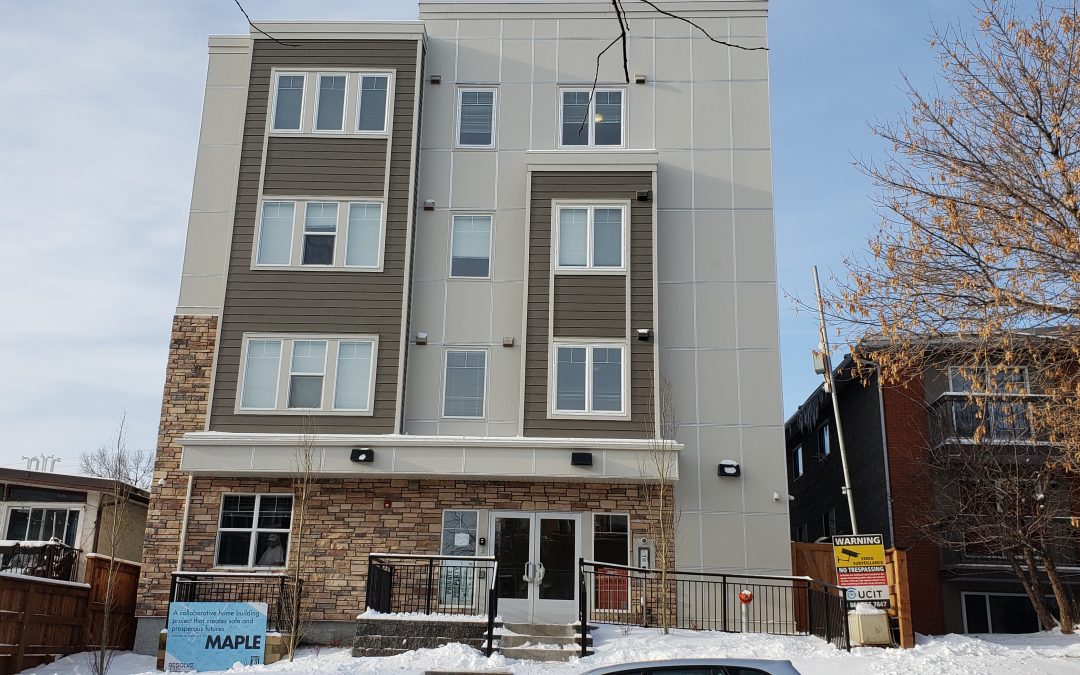
Public Policy and Homelessness: The Case of Calgary
Public Policy and Homelessness: The Case of Calgary
On January 24, I gave a presentation to students at the University of Calgary as part of the Certificate in Working with Homeless Populations program. The goal of this presentation was to convey the fact that public policy strongly impacts the number of homeless people in a given jurisdiction at any particular time.
A version of my PowerPoint slides, which are chock-full of visuals and references, can be downloaded here: Falvo Public Policy and Homelessness WHP 1 of 3
This is Part 1 of a 3-part presentation I gave that day. A blog post based on Part 2 can be found here, while a blog post based on Part 3 can be found here.
Here are 10 things to know:
1. Federal spending in Canada fell drastically from the early 1990s until the mid-2000s. In the early 1990s, federal spending (not counting intergovernmental transfers) represented 19% of our Gross Domestic Product (GDP). By the late-2000s, that figure had dropped to about 13%. That’s a remarkably sharp drop in such a short time.
2. Taxation fell sharply in Canada between the mid-1990s and the late-2000s. Looking at annual tax revenue expressed as a percentage of GDP (all orders of government combined) tax revenue in Canada represented 36% of GDP in the late-1990s. By 2012, that figure had dropped to below 31%. What’s more, Canada’s level of taxation was considerably above the average for OECD countries in the mid-1990s; today, our taxation level is well below the OECD average.
3. Federal spending on housing decreased substantially beginning in the early 1990s. In light of the trends discussed in points #1 and #2 above, this comes as little surprise to most people. For more on the federal role in housing policy, including a look at how it has evolved over the past several decades, see this 2013 conference paper.
4. Rental housing production in Canada fell sharply beginning in the late 1970s. This happened in part due to reductions in public spending on housing discussed in point #3 above. Other factors that likely led to this drop include high interest rates (which made it expensive for developers to finance new supply), a shrinking middle class (which resulted in less demand for rental units), provincial legislation pertaining to condominiums, and rent regulation.[1]
5. Beginning in the mid-1990s, the Alberta government began spending substantially less on housing.This decrease was drastic. Indeed, in 1995, the Alberta government devoted an amount worth 0.36% of its GDP to housing; just five years later, this amount had shrunk to a mere 0.10%. The Alberta government’s annual spending on housing didn’t start to increase again until the early 2000s.
6. In 1993, the Alberta government introduced strict reforms to social assistance. This entailed at least two things. First, the rules changed, meaning that provincial officials made it much more difficult for Albertans to qualify for social assistance. Second, the annual value of benefit levels for those who did qualify for social assistance dropped quite suddenly (and then continued to erode over time). Indeed, a ‘single employable adult’ without dependents received almost $9,000 annually in 1992 (that figure includes tax credits); by 2007, this figure had shrunk to less than $6,000[2] That’s a very sharp loss in annual income for a very low-income individual.
7. Alberta has much less rental housing than other provinces, and this gap has grown in the past 25 years. In 1990, Alberta had almost as many apartment rental units (on a per capita basis) as the rest of Canada. Then, beginning in the early 1990s, the amount of apartment rentals in Alberta started to decrease; today, Alberta has just half the number of apartment rental units (per capita) as the rest of Canada. There are three main reasons for this: the first being, historically, Alberta experienced higher rates of in-migration than other provinces; secondly, the Alberta government was not as keen as other provinces to subsidize housing for lower-income households; and lastly, Alberta has a relatively large number of high-income households (and higher-income households typically prefer to own than rent).
8. Calgary has much less rental housing than Edmonton, and this gap has grown since the mid-1990s. Beginning in the early 1990s, the number of rental housing units (per capita) in both Edmonton and Calgary started to drop each year; and it dropped more sharply in Calgary than in Edmonton. Today, Calgary has approximately half the number of rental units as Edmonton on a per-capita basis.
9. The many public policy factors raised above helped create the ‘perfect storm’ for a very sharp rise in homelessness in Calgary beginning in the mid-1990s. From the mid-1990s until the mid-2000s, homelessness in Calgary saw very rapid growth. For example, according to analysis done with Point-in-Time Count methodology, it grew by almost 700% (per capita) during that time. And while it’s always hard for researchers to establish causation (see point #2 of this blog post) it can reasonably be inferred that the public policy changes discussed above played a major role in this increase.

10. In 2008, Calgary became the first Canadian city to develop a plan to ‘end homelessness’; since that time, homelessness in Calgary has decreased. There are three main reasons for that decrease. First, since 2008, a great deal of progress has been made at the community level in Calgary (I’ve previously discussed the very important role played by the Calgary Homeless Foundation as System Planner here). Second, benefit levels for Alberta social assistance recipients have increased since 2008. For example, total annual income received by a ‘single employable’ household receiving social assistance jumped by more than 30% in 2009; and total annual income for a single adult receiving Assured Income for the Severely Handicapped increased by 30% between 2011 and 2013. Third, Calgary’s rental vacancy rate is very high right now (an indirect result of the drop in the price of oil).
In Sum: The intended ‘take away’ from the presentation is that, homelessness is a complex issue that requires a coordinated and collective response that addresses the local issues through local responses. When it comes to ending homelessness, a community plan that is focused on increasing coordination and collaboration across a system of care and greater integration with big system public service providers is vital. For agencies at the frontline, having a System Planner, such as the Calgary Homeless Foundation, providing the big picture view and coordination matters a great deal… and so too does public policy.
I wish to thank: Rachel Campbell, Louise Gallagher, Ron Kneebone, Kara Layher, Lindsay Lenny, Chidom Otogwu, Steve Pomeroy, Joel Sinclair, John Stapleton, Greg Suttor, Alina Turner and Donna Wood for assistance with this. Any errors are mine.
[1] This is not to suggest that rent regulation doesn’t play an important role in regulating landlord-tenant relations. For more on this, see this recent analysis.
[2] Both figures in this paragraph are expressed in 2015 constant dollars.
For a PDF version of the present blog post, please click here: Public Policy and Homelessness,The Case of Calgary




